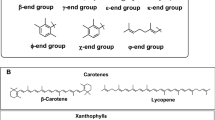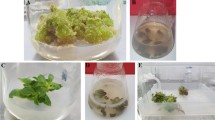Abstract
Quercetin-3-O-α-l-rhamnopyranosyl(1→2)-O-α-l-rhamnopyranoside (QDR) was isolated from the remaining underground parts of Curcuma longa after harvesting the medicinal parts, and the antioxidant activities in vitro and lifespan-extending effect of QDR were elucidated using the Caenorhabditis elegans model system. The 1,1-diphenyl-2-picrylhydrazyl (DPPH) radical scavenging effect of QDR showed similar potent activities in comparison with vitamin C. QDR also showed strong superoxide quenching activities as measured by the riboflavin- and xanthine-originated superoxide quenching activities. QDR demonstrated potent lifespan extension of worms under normal culture condition. Subsequently, the protective effect of QDR on the stress conditions such as thermal and oxidative stresses was determined. In the case of heat stress, QDR-treated worms exhibited enhanced survival rate, as compared to control worms. In addition, QDR-fed worms lived longer than control worms under oxidative stress induced by paraquat. To verify the possible mechanism of QDR-mediated increased lifespan and stress resistance of worms, we investigated whether QDR might alter superoxide dismutase (SOD) activity and intracellular reactive oxygen species (ROS) levels. Our results showed that QDR was able to elevate SOD activity of worms and reduce intracellular ROS accumulation in a dose-dependent manner.
Similar content being viewed by others
References
Adachi H and Ishii N (2000) Effects of tocotrienols on life span and protein carbonylation in Caenorhabditis elegans. J Gerontol A Biol Sci Med Sci 55, B280–5.
Adelman R, Saul LR, and Ames NB (1988) Oxidative damage to DNA: Relation to species metabolic rate and life span. Proc Natl Acad Sci 85, 2706–8.
Ahn DR, Lee EB, Ahn MS, Kim BJ, Lee SY, Lee TG, Lim HW, Lee HY, Bae JJ, and Kim DK (2013) Flavonoids from the Underground Parts of Curcuma longa. Nat Prod Sci 44, 253–6.
Bachir Bey M, Meziant L, Benchikh Y, and Louaileche H (2014) Deployment of response surface methodology to optimize recovery of dark fresh fig (Ficus carica L., var. Azenjar) total phenolic compounds and antioxidant activity. Food Chem 162, 277–82.
Bokov A, Chaudhuri A, and Richardson A (2004) The role of oxidative damage and stress in aging. Mech Ageing Dev 125, 811–26.
Choi DS, Kim SJ, and Jung MY (2001) Inhibitory activity of berberine on DNA strand cleavage induced by hydrogen peroxide and cytochrome c. Bio Sci Biotechnol Biochem 65, 452–5.
Collins JJ, Evason K, and Kornfeld K (2006) Pharmacology of delayed aging and extended lifespan of Caenorhabditis elegans. Exp Gerontol 41, 1032–9.
Cross CE, Halliwell B, Borish ET, Pryor WA, Ames BN, Saul RL, McCord JM, and Harman D (1987) Oxygen radicals and human disease. Ann Intern Med 107, 526–45.
Day AJ, Bao Y, Morgan MR, and Williamson G (2000) Conjugation position of quercetin glucuronides and effect on biological activity. Free Radic Biol Med 29, 1234–43.
Dueñas M, Surco-Laos F, González-Manzano S, González-Paramás AM, Gómez-Orte E, Cabello J, and Santos-Buelga C (2013) Deglycosylation is a key step in biotransformation and lifespan effects of quercetin-3-O-glucoside in Caenorhabditis elegans. Pharmacol Res 76, 41–8.
Finkel T and Holbrook NJ (2000) Oxidants, oxidative stress and the biology of ageing. Nature 408, 239–47.
Gao H, Cheng N, Zhou J, Wang B, Deng J, and Cao W (2014) Antioxidant activities and phenolic compounds of date plum persimmon (Diospyros lotus L.) fruits. J Food Sci Technol 51, 950–6.
Ginnopolitis CN and Ries SK (1977) Superoxide dismutase. I. Occurrence in higher plants. Plant Physiol 59, 309–14.
Glenn CF, Chow DK, David L, Cooke CA, Gami MS, Iser WB, Hanselman KB, Goldberg IG, and Wolkow CA (2004) Behavioral deficits during early stages of aging in Caenorhabditis elegans result from locomotory deficits possibly linked to muscle frailty. J Gerontol A Biol Sci Med Sc 59, 1251–60.
Gruber J, Schaffer S, and Halliwell B (2008) The mitochondrial free radical theory of aging-where do we stand? Front Bio Sci 13, 6554–79.
Grünz G, Haas K, Soukup S, Klingenspor M, Kulling SE, Daniel H, and Spanier B (2012) Structural features and bioavailability of four flavonoids and their implications for lifespan-extending and antioxidant actions in C. elegans. Mech Ageing Dev 133, 1–10.
Guarente L and Kenyon C (2000) Genetic pathways that regulate ageing in model organisms. Nature 408, 255–62.
Harman D (1973) Free radical theory of aging. Triangle 12, 153–8.
Herndon LA, Schmeissner PJ, Dudaronek JM, Brown PA, Listner KM, Sakano Y, Paupard MC, Hall DH, and Driscoll M (2002) Stochastic and genetic factors influence tissue-specific decline in ageing C. elegans. Nature 419, 808–14.
Ishii N, Senoo-Matsuda N, Miyake K, Yasuda T, Ishii PS, Hartman PS, and Furukawa S (2004) Coenzyme Q10 can prolong C. elegans lifespan by lowering oxidative stress. Mech Ageing Dev 125, 41–6.
Kampkötter A, Gombitang N, Kwonkam C, Zurawski RF, Timpel C, Chovolou Y, Wätjen W, and Kahl R (2007) A effects of the flavonoids kaempferol and fisetin on thermo tolerance, oxidative stress and FoxO transcription factor DAF-16 in the model organism Caenorhabditis elegans. Toxicol 81, 849–58.
Kenyon CJ (2010) The genetics of ageing. Nature 464, 504–12.
Kitabatake T, TAbo H, Matsunaga H, and Haqinaka J (2013) Preraration of monodisperse curcumin-imprinted polymer by precipitation polymerzation and its application for the extraction of curcuminoids from Curcuma longa L. Anal Bioanal Chem 405, 6555–61.
Lee EY, Shim YH, Chitwood DJ, Hwang SB, Lee J, and Paik YK (2005) Cholesterol-producing transgenic Caenorhabditis elegans lives longer due to newly acquired enhanced stress resistance. Biochem Biophys Res Commun 328, 929–36.
Lithgow GJ, White TM, Melov S, and Johnson TE (1995) Thermo tolerance and extended life-span conferred by single-gene mutations and induced by thermal stress. Proc Natl Acad Sci 92, 7540–4.
Liu Y and Nair MG (2012) Curcuma longa and Curcuma mangga leaves exhibit functional food property. Food Chem 135, 634–40.
Mekheimer RA, Sayed AA, and Ahmed EA (2012) Novel 1,2,4-triazolo[1,5-a]pyridines and their fused ring systems attenuate oxidative stress and prolong lifespan of Caenorhabiditis elegans. J Med Chem 55, 4169–77.
Mujahid A, Sato K, Akiba Y, and Toyomizu M (2006) Acute heat stress stimulates mitochondrial superoxide production in broiler skeletal muscle, possibly via down regulation of uncoupling protein content. Poult Sci 85, 1259–65.
Nor FM, Mohamed S, Idris NA, and Ismail R (2009) Antioxidative properties of Curcuma longa leaf extract in accelerated oxidation and deep frying studies. J Am Oil Chem Soc 86, 141–7.
de Oliveira SQ, Kappel VD, Pires VS, Lencina CL, Sonnet P, Moreira JC, and Gosmann G (2014) Antioxidant properties of phenolic compounds from Baccharis articulata and B. usterii. Nat Prod Commun 9, 941–2.
Petrascheck M, Ye X, and Buck LB (2007) An antidepressant that extends lifespan in adult Caenorhabditis elegans. Nature 450, 553–6.
Thuong PT, Kang HJ, Na MK, Jin WY, Youn UJ, and Seong YH (2007) Antioxidant constituents from Sedum takesimense. Phytochemistry 68, 2432–8.
Valdez-Morales M, Espinosa-Alonso LG, Espinoza-Torres LC, Delgado-Vargas F, and Medina-Godoy S (2014) Phenolic content and antioxidant and antimutagenic activities in tomato peel, seeds, and byproducts. J Agric Food Chem 62, 5281–9.
Wu QL, Wang SP, Du LJ, Zhang SM, Yang JS, and Xiao PG (1998) Chromone glycosides and flavonoids from Hypericum japonicum. Phytochemistry 49, 1417–20.
Wu Z, Smith JV, Paramasivam V, Butko P, Khan I, Cypser JR, and Luo Y (2002). Ginkgo biloba extract EGb 761 increases stress resistance and extends life span of Caenorhabditis elegans. Cell Mol Biol 48, 725–31.
Yoshida T, Mori K, Hatano T, Okumura T, Uehara L, Komagoe K, Fujita Y, and Okuda T (1989) Studies on inhibition mechanism of autooxidation by tannins and flavonoids. V. Radical scavenging effects of tannins and related polyphenols on 1,1-diphenyl-2-picrylhydrazyl radical. Chem Pharm Bull 37, 1919–21.
Author information
Authors and Affiliations
Corresponding author
Rights and permissions
About this article
Cite this article
Ahn, D., Lee, E.B., Kim, B.J. et al. Antioxidant and lifespan extending property of quercetin-3-O-dirhamnoside from Curcuma longa L. in Caenorhabditis elegans . J Korean Soc Appl Biol Chem 57, 709–714 (2014). https://doi.org/10.1007/s13765-014-4200-3
Received:
Accepted:
Published:
Issue Date:
DOI: https://doi.org/10.1007/s13765-014-4200-3




